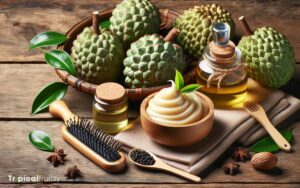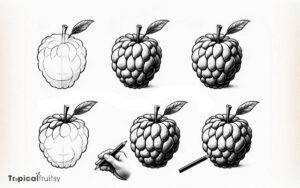How Long for Custard Apple to Fruit? Patience and Growth!
Despite what you might’ve heard, growing custard apples isn’t as daunting as it seems, especially when you’re keen on when and how they bear fruit.
I’ve learned that patience is key; from planting a custard apple tree, it typically takes between three to four years for the first fruits to appear. The journey, however, hinges on various factors such as climate, care, and the tree’s health.
I’m here to guide you through understanding the growth cycle of this exotic fruit, the key elements that influence its development, and how to maximize the yield from your tree.
Let’s also navigate common hurdles you might encounter, ensuring you’re well-equipped to enjoy the sweet rewards of your custard apple tree.
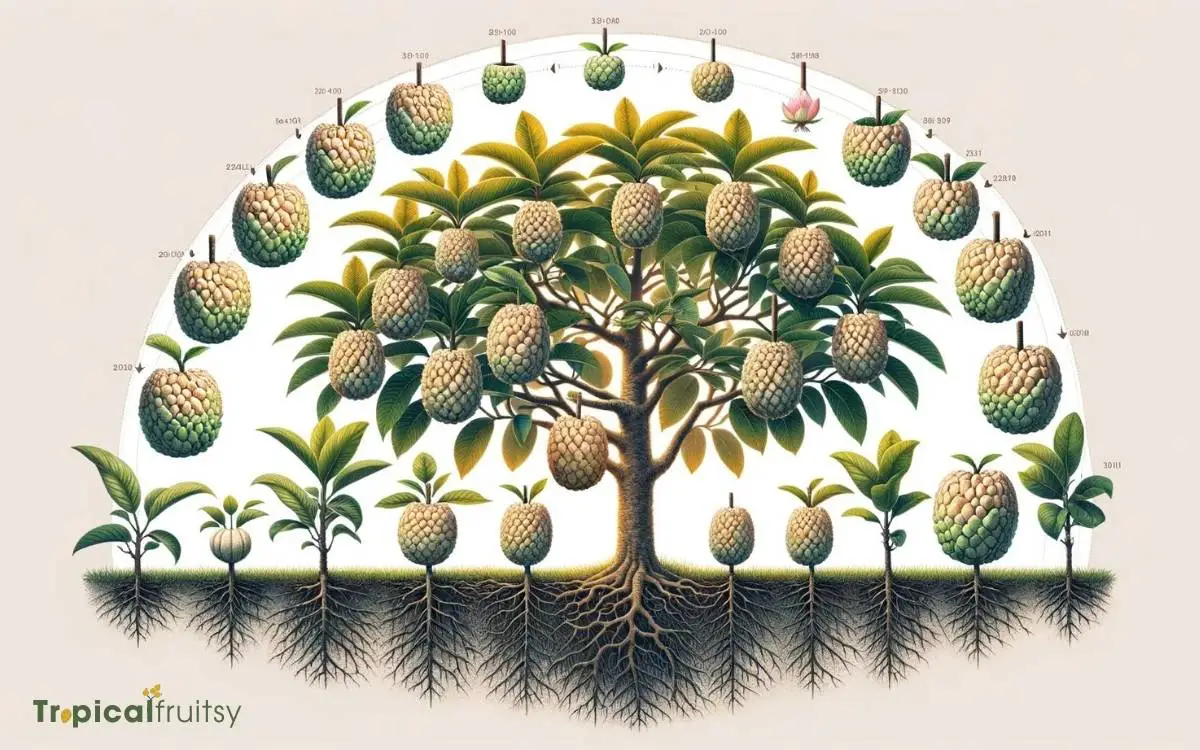
Key Takeaway
Understanding Custard Apple Growth
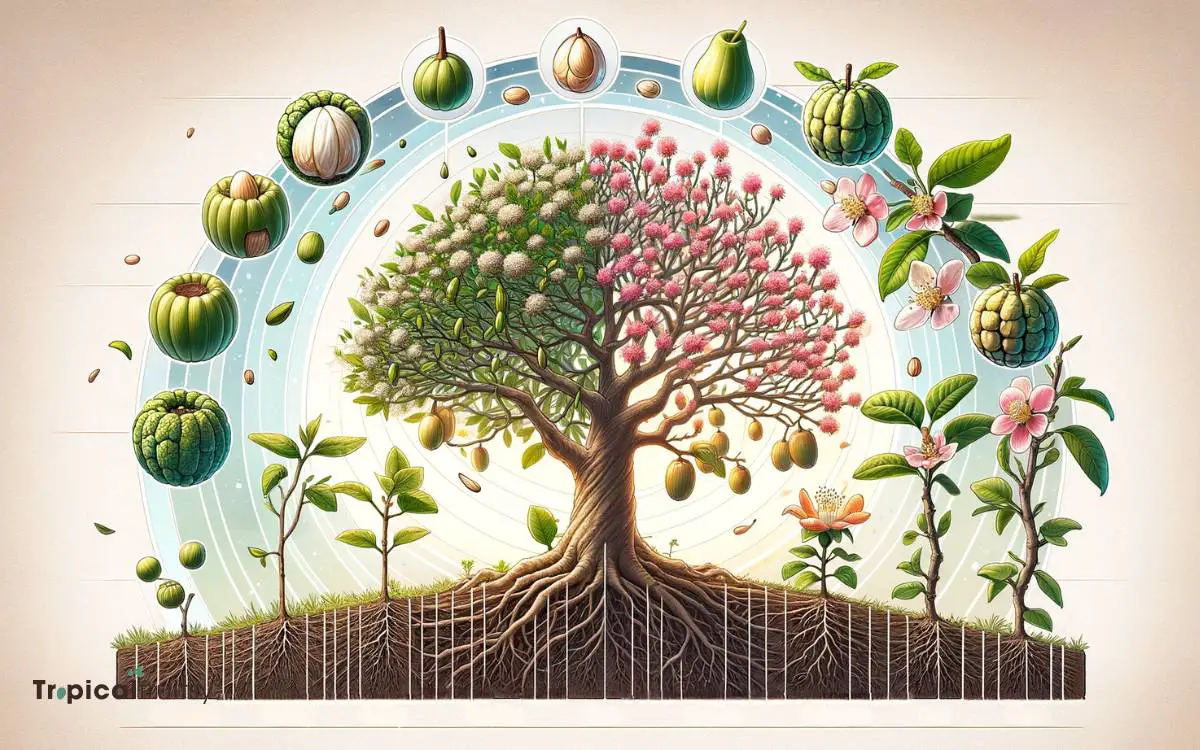
I’ll begin by explaining that the growth of a custard apple tree is a vital factor in determining the time it takes to bear fruit. Typically, a custard apple tree can take between three to five years to mature enough to produce its first fruits.
This duration hinges on several factors such as the tree’s genetic makeup, soil quality, and the care it receives, including proper watering, fertilization, and pruning.
An analytical approach to understanding this growth involves tracking the tree’s development stages. Initially, the tree focuses on root and foliage development.
As it matures, its energy shifts towards flowering and fruiting. Optimal conditions can accelerate growth, while any stressors may prolong the time until the tree bears fruit. Thus, meticulous care and favorable conditions are crucial for a timely harvest.
Key Factors Affecting Fruit Development
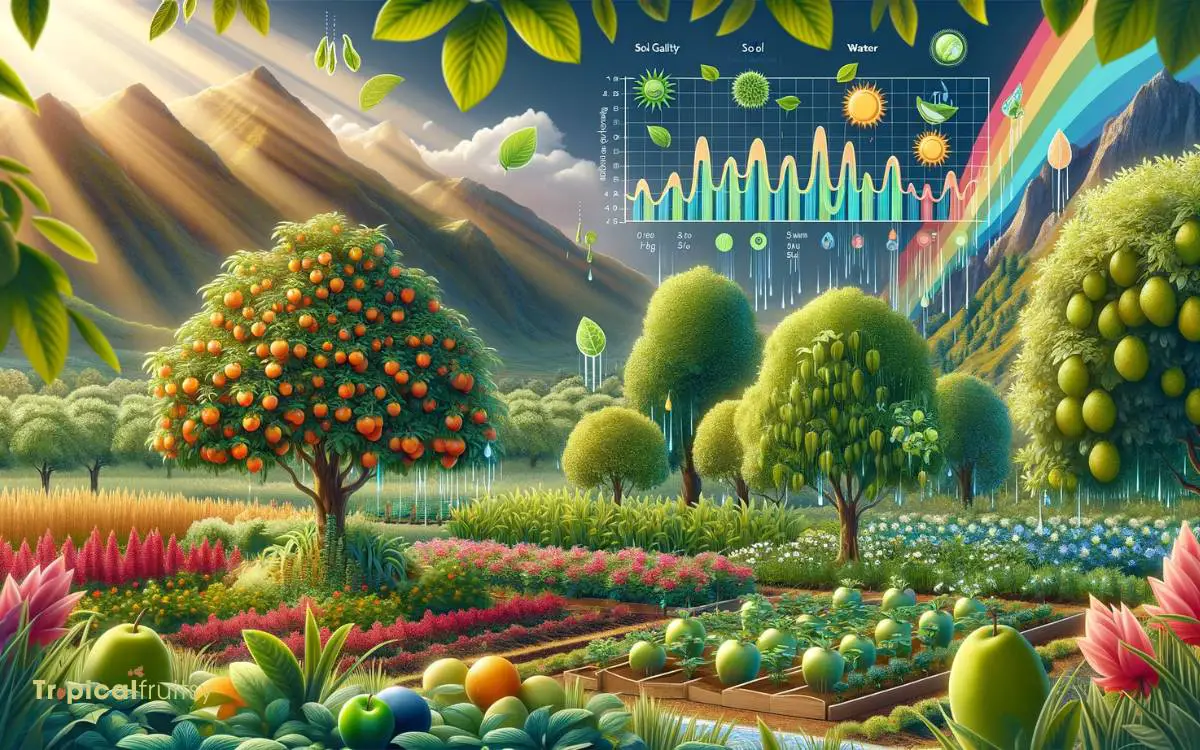
Several key factors significantly influence the fruit development of custard apple trees, ranging from climatic conditions to pollination efficiency.
To detail these aspects methodically:
- Climate: Custard apples thrive in warm, tropical to subtropical climates. Temperature swings, especially during the flowering stage, can severely impact fruit set and development.
- Pollination: For fruit to develop, efficient pollination is crucial. Custard apple flowers aren’t self-pollinating, so manual intervention or the presence of pollinators is necessary.
- Tree Health: Nutrient availability, water stress, and disease presence directly affect the tree’s ability to bear and develop fruit.
I’m dissecting these elements because understanding them can dramatically improve cultivation practices, ensuring that growers can anticipate the time it takes from flowering to fruit maturity, and implement strategies to optimize yield.
Average Time to First Harvest
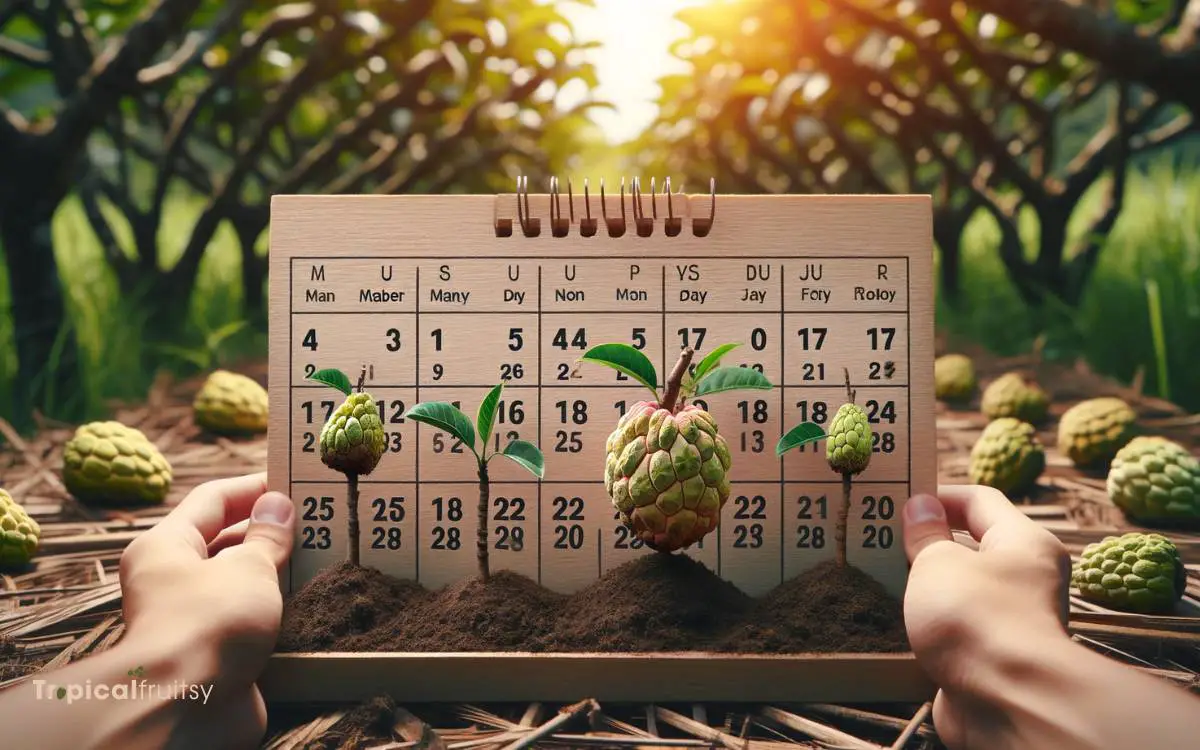
Turning now to the average time it takes for a custard apple tree to bear fruit, it’s typically between three to five years after planting. This period is crucial, as it involves the tree’s transition from growth to production.
To understand this timeline, we must consider variables such as genetics, care, and climate, which all play pivotal roles in fruit development.
| Year of Growth | Expected Development Stage |
|---|---|
| Year 1 | Establishment of root system |
| Year 2 | Development of branches |
| Year 3 | Initiation of flowering |
| Year 4 | Potential for light fruiting |
| Year 5 | Full fruit production |
These stages are indicative; actual results may vary based on specific conditions. Methodically providing optimal care throughout these years can lead to a successful and bountiful first harvest.
How long does it take for a custard apple tree to bear fruit when grown in a pot?
Growing a custard apple tree in a pot can be a rewarding experience. By following the easy steps for growing custard apple, you can expect your tree to start bearing fruit within 2-3 years. Regular watering, proper sunlight, and occasional fertilization will help speed up the fruit-bearing process.
Maximizing Fruit Production
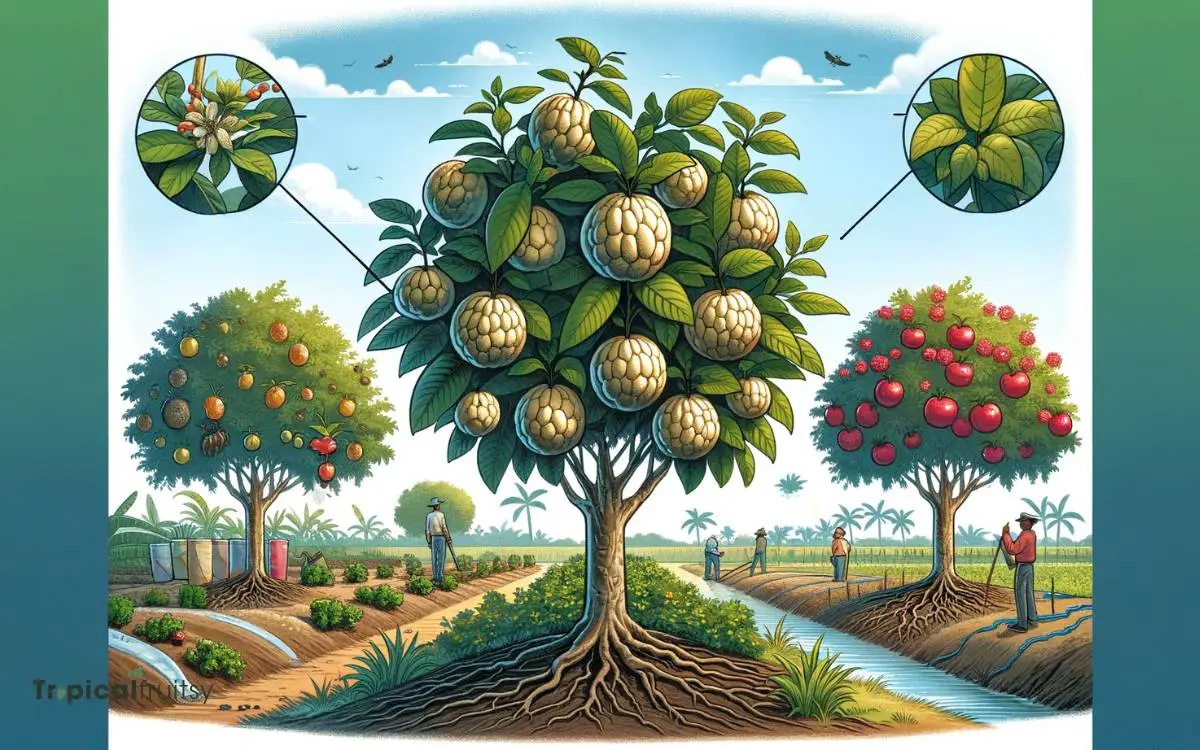
Understanding the growth stages of a custard apple tree, I’m now focusing on enhancing fruit production through targeted cultivation techniques.
To achieve this, I follow a methodical approach that involves:
- Pruning: Strategic removal of certain branches to improve sunlight penetration and air circulation, which are crucial for fruit development.
- Fertilization: Applying a balanced blend of nutrients, especially during the flowering phase, to promote healthy growth and abundant fruit set.
- Pest and Disease Management: Implementing proactive measures to protect against common threats, ensuring that the tree remains vigorous and capable of producing a full crop.
Troubleshooting Common Setbacks
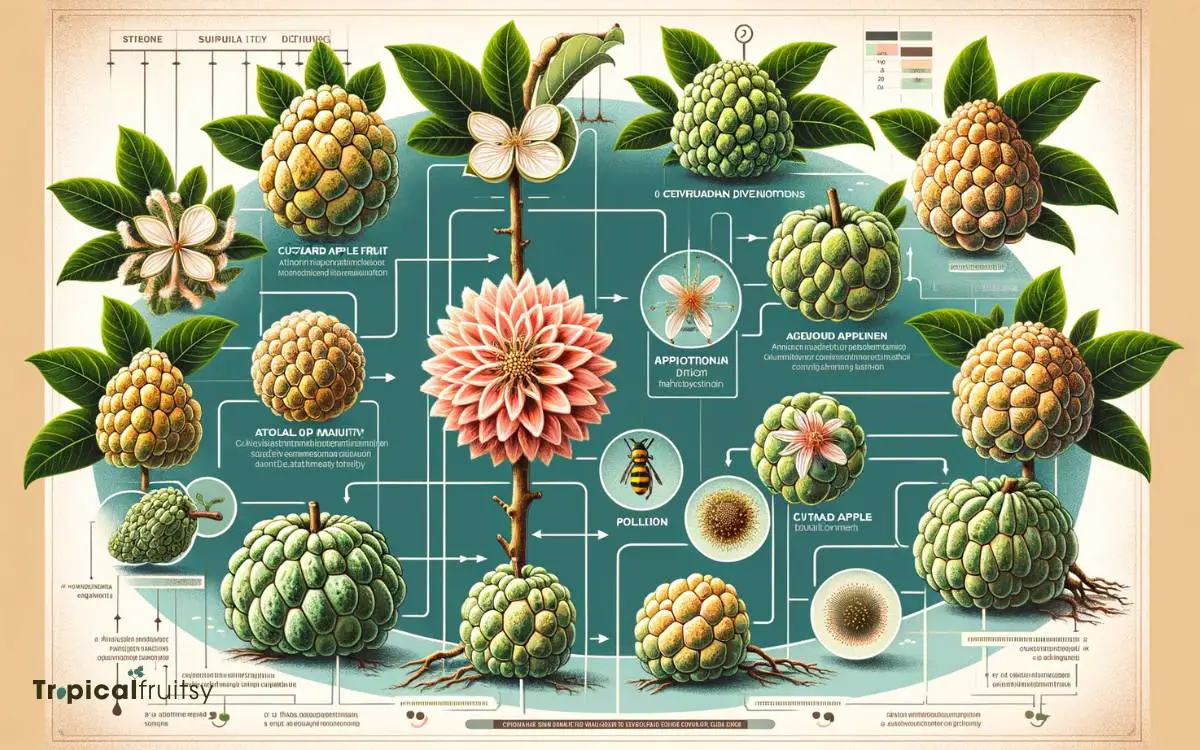
Despite my efforts to enhance fruit production, I’ve encountered various setbacks that can delay the custard apple’s journey to harvest. Analyzing these issues requires a methodical approach to identify and rectify them effectively.
Here’s a concise table outlining common problems, causes, and solutions:
| Setback | Potential Cause | Solution |
|---|---|---|
| Inadequate fruit set | Poor pollination | Hand pollinate or attract pollinators |
| Fruit drop | Nutrient deficiencies | Adjust soil fertility, ensure balanced feeding |
| Pest infestations | Insects like aphids | Use appropriate organic insecticides |
| Diseases like anthracnose | Fungal pathogens | Apply fungicides, improve air circulation |
Conclusion
While it’s true that patience is a virtue when growing custard apples, the average 3-5 year wait for the first harvest is well worth it.
By meticulously managing key factors like soil quality, watering, and pruning, I’ve seen yields improve significantly.
Remember, despite occasional setbacks such as pests or climate challenges, a systematic approach can ensure a bountiful custard apple crop.
Trust the process, and the fruits of your labor will be both literal and delightful.


